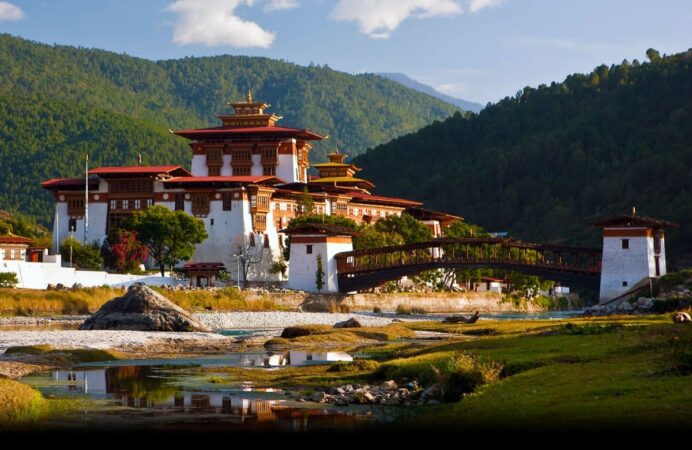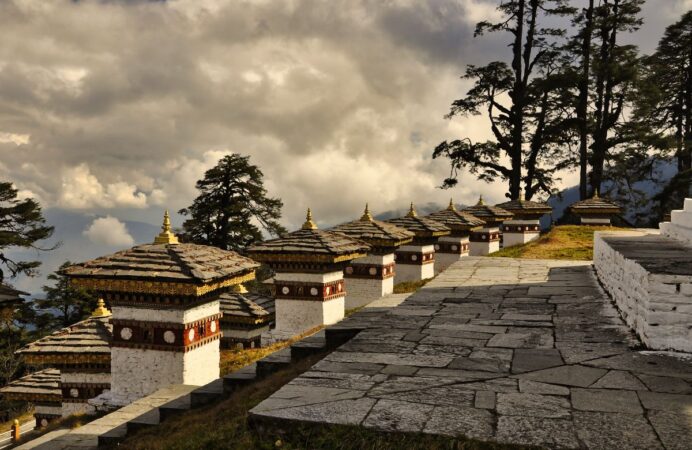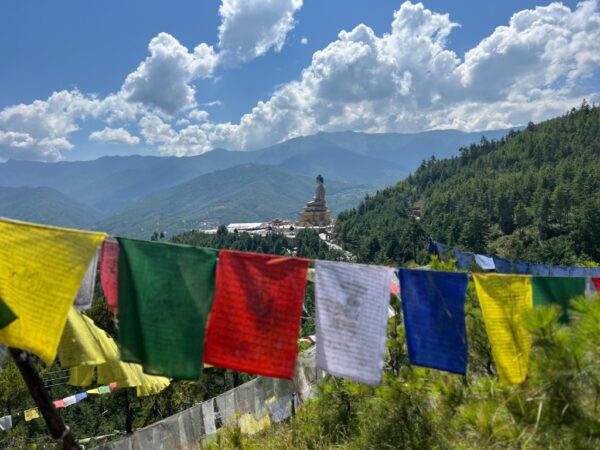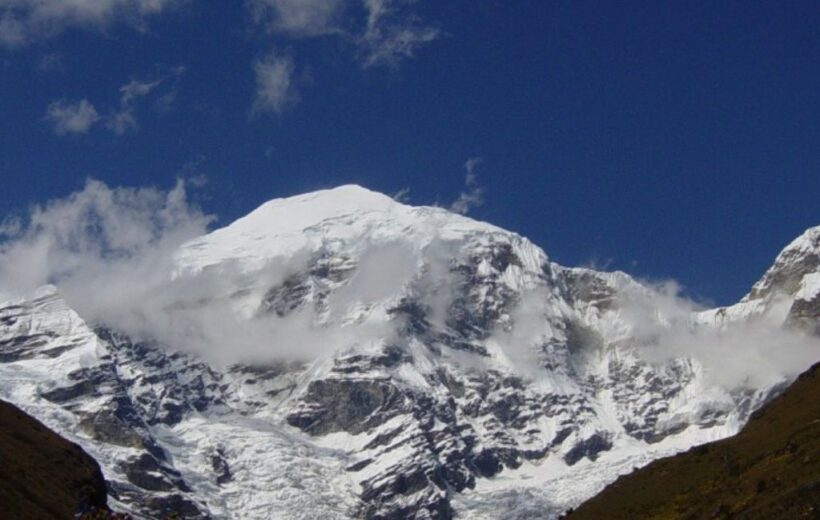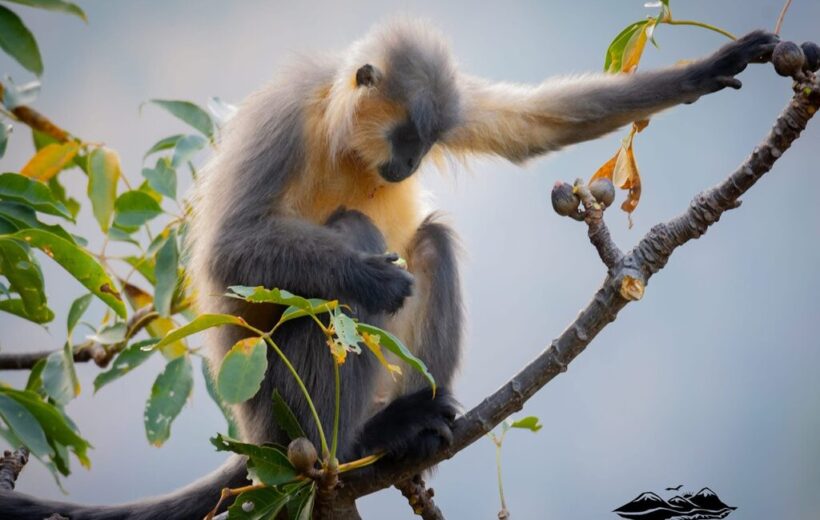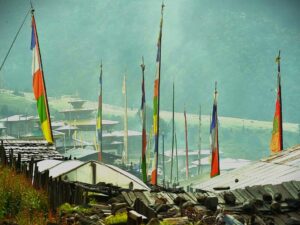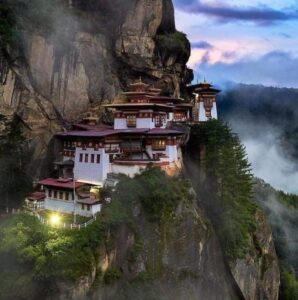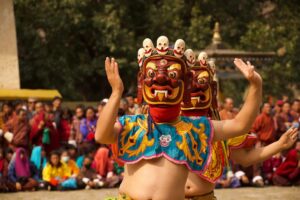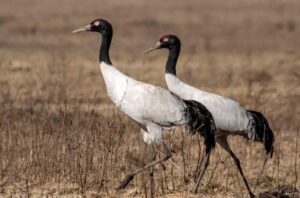Overview
This 9-day Himalayan tour offers a comprehensive journey through Bhutan’s rich cultural and natural landscapes. Starting in Paro, where you’ll be introduced to the unique charm of this Himalayan kingdom, the tour moves on to Thimphu, the capital city, for a day of sightseeing. You'll then embark on a scenic drive to Trongsa, a town known for its majestic Dzong, before continuing to Bumthang, the spiritual heartland of Bhutan, where you’ll explore its sacred temples and monasteries. The tour then leads to Punakha, the ancient capital, with its stunning Punakha Dzong, set at the confluence of two rivers. Finally, you'll return to Paro, allowing time to reflect on your journey before your departure. This itinerary beautifully balances the exploration of Bhutan's spiritual heritage with the breathtaking natural beauty of the Himalayan region.
Included/Excluded
- The Bhutan SDF
- All accommodations
- Meals and mineral water
- A licensed English-speaking guide
- A driver and vehicle
- Air fare
- A visa fee of US$40
- Alcohol
- Gifts/Souvenirs
- Travel insurance and personal bills
- Museums & Monument Fees
Tour Plan
Day 1. Paro
On arrival at Paro Airport, representatives from HimaQuest Tours will receive you and drive you to Thimphu. Check into the hotel and take some time to relax after your journey. In the evening, explore the vibrant streets of Thimphu, where you can visit local markets, browse traditional handicrafts, and experience the unique culture of Bhutan. Overnight stay at a hotel in Thimphu.
Day 2. Thimphu, sight seeing
Visit to National Library, which holds a vast collection of Buddhist texts, manuscripts, modern academic books and printing blocks for prayer flags. Just above it is Painting School ; famous for 13 traditional arts and crafts. Futher up is a Traditional Medicine Institute, the rich herbal medicines. Memorial Chorten, the beautiful stupa built in the memory of Bhutan's third King.
Tashichhodzong: the beautiful medieval fortress/monastery houses Secretariat building, and other government offices. It is also the summer residence of monks body. Handicraft Emporium; a wide assortment of beautifully handwoven and crafted products. Dinner and over night at the hotel in
Day 3. Drive from Thimphu to Trongsa
Drive to Trongsa via Dochula pass. A panoramic view Himalayan peaks can be seen towards the north east. Further onwards arrive Wangduephodrang, sightseeing at town and lunch. Proceed to Trongsa across Pelela pass.On the way visit to Chendbji Chorten, which was built in 18th century by a lama Shida. Arrival at Trongsa and check into the hotel. Dinner and overnight at hotel.
Day 4. Trongsa sight seeing and to B/thang
Visit to Trongsa Dzong, built by Shabdrung in 1647 and Ta Dzong/watch tower, now converted into museum. Proceed to Bumthang passing through Yutong La pass. Further 13 kms ahead lies Chumey valley famously known for hand woven ‘yatha’. On arrival in Bumthang, check into the hotel. After lunch, visit to Kurje Lhakhang, the Jambey Lhakhanng and the Jakar Dzong.Dinner and overnight at the hotel in Bumthang.
Day 5. Bumthang to Phobjikha
After an early breakfast, begin your journey from Bumthang to Phobjikha, a stunning glacial valley known for its pristine natural beauty and as the winter home of the endangered black-necked cranes. The drive takes approximately 5–6 hours, passing through picturesque landscapes, dense forests, and high mountain passes. Continue the journey, crossing Pele La Pass (3,420m), which marks the boundary between central and western Bhutan. As you descend into Phobjikha Valley, you will be greeted by vast open meadows and a serene, unspoiled environment. Upon arrival, check into your hotel or a traditional farmhouse and take some time to relax. In the evening, enjoy a leisurely walk around the valley, soaking in the tranquility of this remote and picturesque destination. If visiting between late October and mid-March, you may have the chance to witness the black-necked cranes migrating here from Tibet. Overnight stay in Phobjikha.
Day 6. Phobjikha to Punakha
After breakfast, drive toward Punakha. Before arriving, visit Wangdue Phodrang Dzong, a historic fortress perched on a ridge overlooking the river. Take some time to explore the surrounding area and learn about its cultural and historical significance. Upon reaching Punakha, check into your hotel and enjoy a delicious lunch. In the afternoon, embark on a sightseeing tour of Punakha, starting with the iconic Punakha Dzong, a majestic fortress situated at the confluence of the Pho Chhu and Mo Chhu rivers. Stroll across the traditional wooden cantilever bridge and admire the dzong's intricate architecture and stunning murals. Punakha Dzong served as the capital of Bhutan until 1955 and continues to function as the winter residence of the monk body. Its historical importance, combined with its breathtaking setting, makes it one of the most significant and picturesque dzongs in Bhutan.
Overnight stay at a hotel in Punakha.
Day 7. Paro
Embark on your journey to Paro, stopping en route to visit Chimi Lhakhang, also known as the "Fertility Temple." This sacred site, dedicated to Lama Drukpa Kunley, is renowned for its spiritual blessings and serene surroundings. Take a short walk through picturesque rice fields to reach the temple and learn about its unique history. Upon arrival in Paro, check into your hotel and take some time to relax. Afterward, visit Ta Dzong, a former watchtower that now houses the National Museum, showcasing Bhutanese artifacts, art, and historical relics. Then, explore Paro Dzong, also known as Rinpung Dzong, an impressive fortress that offers stunning views of the valley and insight into Bhutan’s monastic and administrative traditions. In the evening, stroll through the charming town of Paro, where you can visit local shops, browse traditional handicrafts, or simply enjoy a peaceful walk through the valley. Overnight stay in Paro.
Day 8. Hike to Tiger Nest Monastery
The hike to Tiger’s Nest Monastery (Paro Taktsang) is a must-do experience in Bhutan, offering stunning views and deep spiritual significance. Perched at 3,120 meters above sea level, it is believed to be the meditation site of Guru Rinpoche. The 6 km round-trip hike starts at 2,600 meters and involves a 520-meter elevation gain. It takes 2.5 to 3 hours to ascend and 1.5 to 2 hours to descend. The trail begins with a gradual climb through pine forests and becomes steeper as you approach the monastery. Visitors can explore the temples and caves inside. The best times to visit are in Spring (March-May) and Autumn (September-November). To ensure a smooth hike, wear comfortable shoes, carry water and snacks, take breaks to adjust to the altitude, and start early to avoid crowds.
Day 09: Departure to the Airport
On the final day of your journey, after breakfast, you will be transferred to Paro Airport for your departure. Depending on your flight schedule, you may have some time for last-minute shopping or a brief visit to local shops near the airport. Your guide will assist you with the check-in process and ensure that you have everything you need for a smooth departure. As you bid farewell to Bhutan, take a moment to reflect on the memorable experiences, breathtaking landscapes, and the rich culture you've encountered. Whether you’re departing with a heavy heart or eager for your next adventure, Bhutan's spirit will stay with you long after you've left. Safe travels and we hope to welcome you back to Bhutan in the future!
Tour Map
You may like
Frequently asked question
Itinerary is always flexible if you are travelling in a smaller group. You have a choice of eating in a different restaurant, however, the menu depends on the chef and usually it is a set menu but not necessarily the same menu every day.
It is in the tourism industry but it is not compulsory. It actually depends on the service rendered to you.
Yes, things that are not included in the tariff are all beverages, telecommunications, tips, laundry, massage and souvenir shopping.
Bhutan is well connected and every town has IDD services. Internet cafes are available almost everywhere. Cell phones can also be used but you need to get Bhutan prepaid SIM Card and recharge it. Recharge vouchers are available at every second shop in town.
You can exchange money in the banks as well as in the hotels were you are staying. Rates will be better in the banks plus US$ is acceptable in almost all of the shops in town.
It cannot be safer anywhere else in the world.
Bhutan is all season tourist destination for cultural tours. However the month of February, March, April, and September, October, November are considered the best time due to pleasant weather conditions. December and January are winter months and June, July and August, the rainy season. It is important to note that the climatic conditions during the winter months are not extreme. The average temperature would range from 10-17 degree Celsius during day time.
The money you have transferred will be with held by the Tourism Council of Bhutan till the day you depart. Travel Agents can only withdraw the money after your departure upon submitting your tour invoice. Therefore, your money is safe.
It is government rule that total tour payment must be remitted without which the government will not issue the visa.
Decide the number of days you want to spend in Bhutan according to your interest and budget.
Decide the date and the port of entry (You can fly into Bhutan from one of these cities; Bangkok, Katmandu, New Delhi, Calcutta and Dacca) into Bhutan.
Fill up the visa application form (You can download the visa application form here).
Remit the total tour payment (You can download the money transfer details here). It is government rule that total tour payment must be remitted without which the government will not issue the visa.
Once we have confirmed dates, port of entry, dully filled visa application form, and money received, we will process your visa.
Except for travelers from India, Bangladesh and Maldives, all visitors to Bhutan are required to obtain visa approval prior to their arrival, which will be processed by us.
Tourism is not restricted but the minimum daily tariff is set by the government. It is also necessary that all tourists must come through a registered tour operator to plan your itinerary and process your visa. Tourist cannot come on their own unless they are invited guest.
Druk Air operates daily flight (once daily) from Bangkok (Thailand) and four flights a week from New Delhi, Kathmandu and Calcutta (India) and two flights a week from Dacca (Bangladesh). There are different flight schedules for the summer and the winter seasons. For Druk Air schedules click on Flights Details or you can also visit Druk Air web site at www.drukair.com.bt . You can also enter Bhutan via Bagdogra Airport, Siliguri (West Bengal) in India. It has regular flights from New Delhi (twice daily).
Bhutan is connected to the outside world through Druk Air (Royal Bhutan Airlines), the national carrier which is the only airline operating flights in and out of the kingdom.


